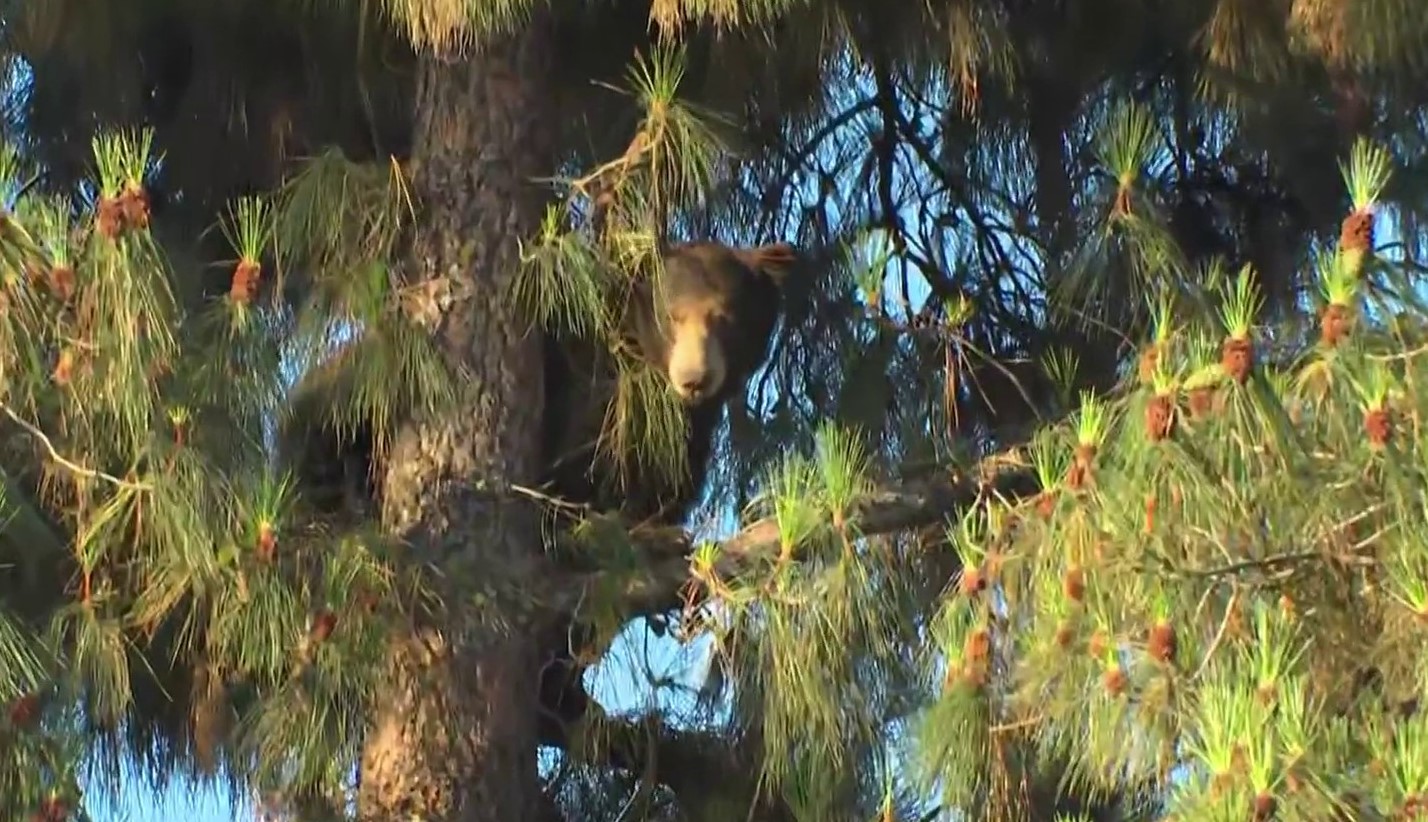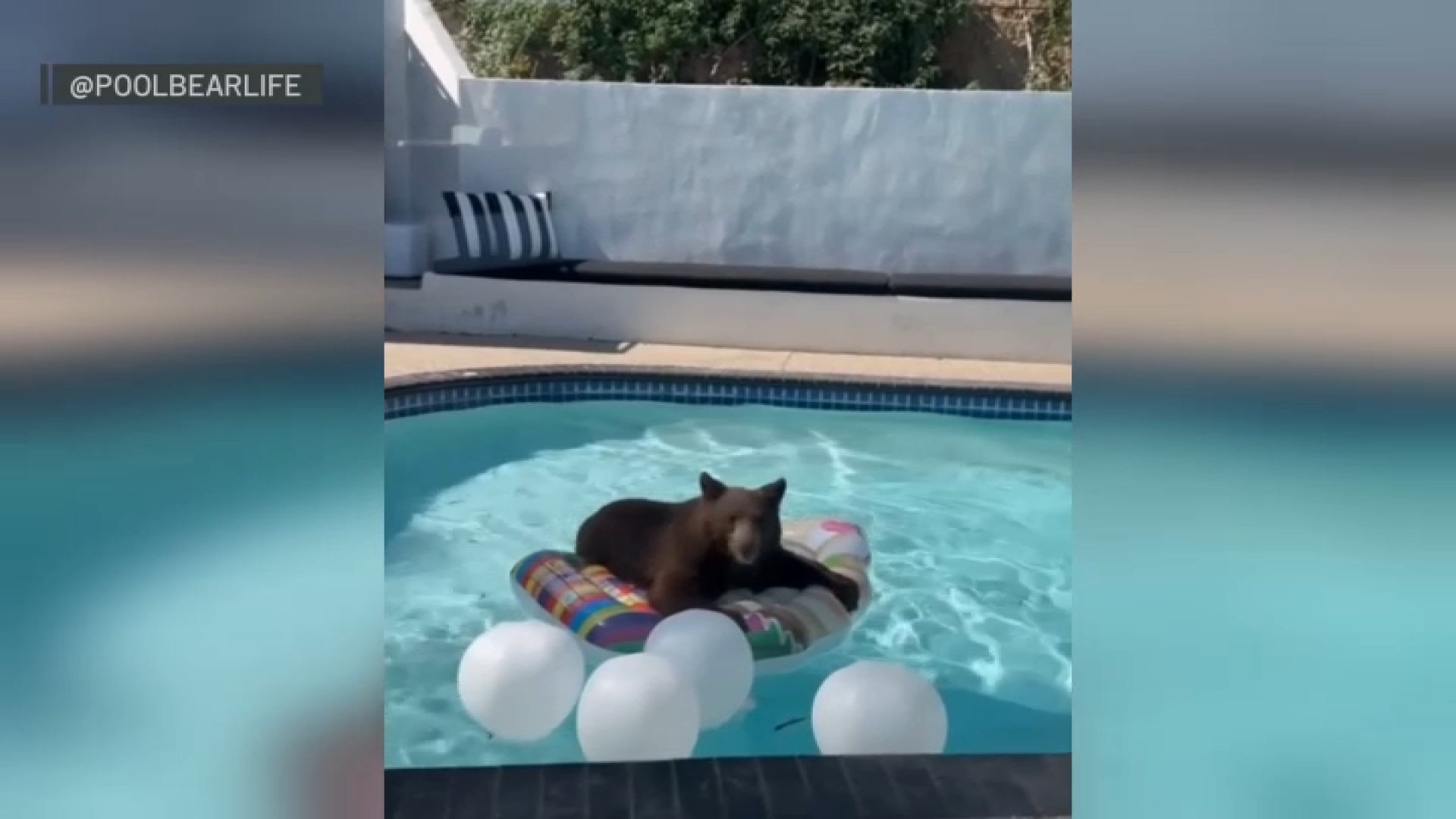A bear who climbed a tree in Chatsworth and stayed there for hours Tuesday is back in the peace and quiet of Southern California's mountain wilderness.
Photos provided by the state Department of Fish and Wildlife show the bear with a history of adventurous travel resting in the wilderness after she was tranquillized and removed late Tuesday morning from the tree in a San Fernando Valley neighborhood. The bear drew onlookers from a nearby apartment complex after wandering around the business park, jumping a chain-link fence and camping out overnight on a tree branch.

The bear, wearing a tracking collar and ear tag used by wildlife experts to study California's bear population, was spotted overnight Tuesday south of the 118 Freeway. She came down from the pine tree later Tuesday morning, then walked around the parking area and crawled under a shade umbrella outside a business.
Get top local stories in Southern California delivered to you every morning. >Sign up for NBC LA's News Headlines newsletter.
A few minutes later, she climbed another tree.
After she was tranquilized, the bear tumbled from the tree onto mats provided by a nearby gym. She was loaded into a pickup bed and hauled back into the mountains.
Wildlife officials said Wednesday that she hadn't moved far from where she was released, which isn't unusual after the tranquilizer and a hectic day.
The female bear between the ages of 3 and 5 is no stranger to wildlife officials. She was captured in the Claremont area, located about 50 miles from Chatsworth in the foothills of the San Gabriel Mountains, in late May and taken to Angeles Nation Forest, state wildlife officials said. Authorities have been monitoring the bear since then, tracking its movement with the collar along the 210 Freeway corridor and into the Malibu area.
Authorities tried to trap the bear Monday in the Northridge area before it showed up in Chatsworth, where temperatures were expected to climb into the 90s on Tuesday.
About bears in California
Black bears, which can have different color coats, like to feed on plants, insects, nuts, berries and whatever else they think of as edible — such as the contents of trash bins. If food is scarce in their natural habitat, bears are likely to forage elsewhere, bringing them into Southern California foothill neighborhoods.
California's black bear population has been on the rise over the last two decades, growing from an estimated 10,000 to 15,000 in the early 1980s to between 25,000 and 30,000 — and that's a conservative estimate, according to the state department of fish and wildlife.
Black bears, recognized by their small, narrow heads and small ears, have coats that range in color from tan or brown to black. Females grow up to about 200 pounds and males can be a hefty 350 pounds with some giants weighing in at more than 600 pounds.
About half of the state's bear population can be found in the Sierra Nevada Mountains and areas to the north and west. Only an estimated 10 percent of the black bear population inhabits central western and southwestern California.
Although its on the state flag, the fearsome grizzly bear no longer can be found in the California wild. The last grizzly bear observed in California was shot in the early 1920s.



